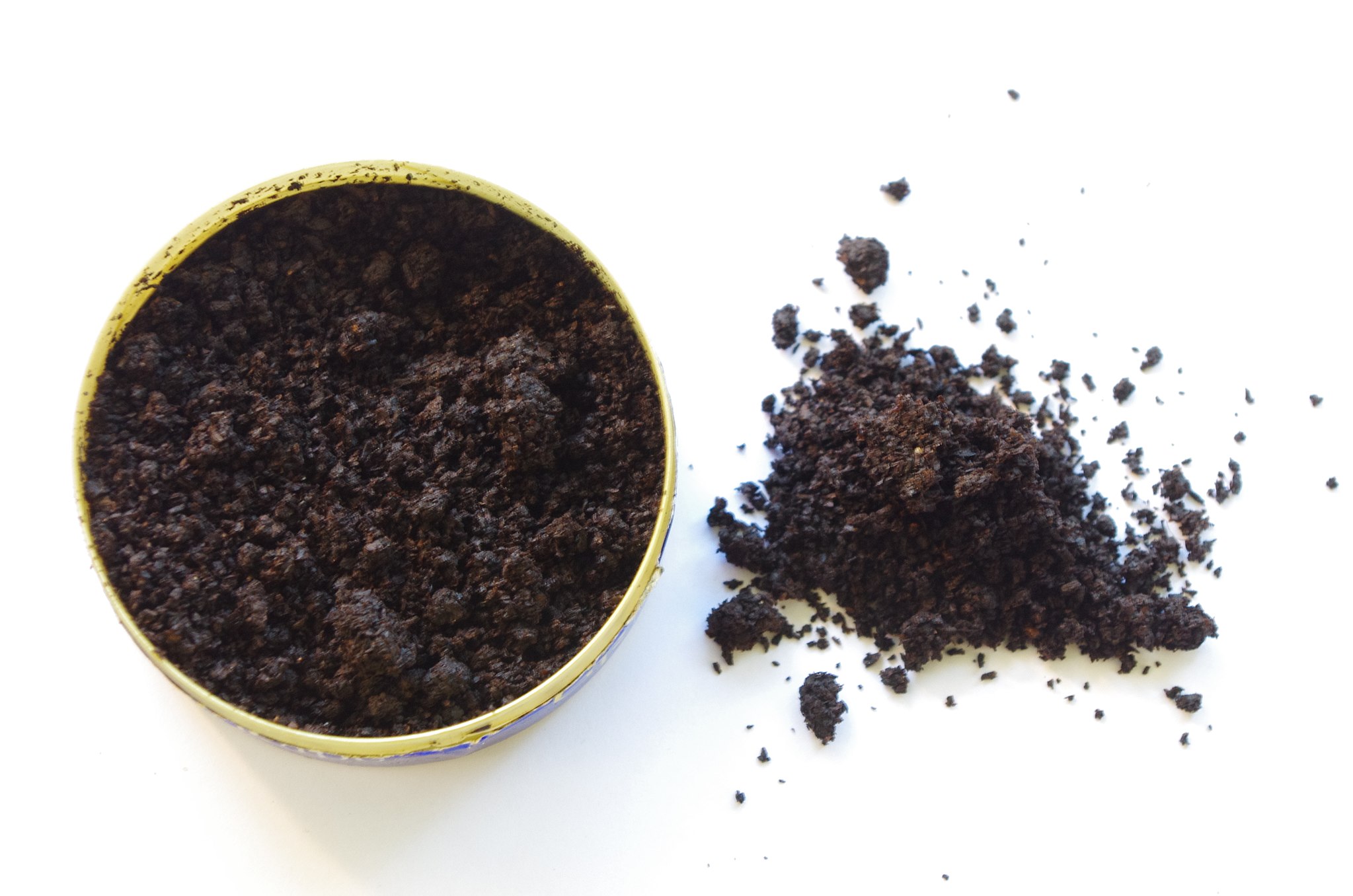Chewing tobacco, nicotine patches, and snus are devices that deliver varying amounts of nicotine to your brain. Nicotine is also the main addictive chemical in tobacco.
Chewing tobacco has been used for centuries, originally as a form of currency and later as a way to enjoy tobacco. In recent years, it has gained popularity among teens and athletes as a healthier alternative to smoking. It is made by grinding tobacco leaves into a fine powder and adding water to make a paste. The paste is then rolled into balls and left to dry. Once dry, the balls are chewed or held on the mucous membranes of the mouth, where nicotine is absorbed.
Nicotine pouches or snus are a newer way to enjoy tobacco. These pouches are filled with ground tobacco leaves and flavoring. They can be enjoyed without having to worry about spitting or making a mess.
Snus is not a newcomer, it was actually invented in the early 1800's.
But the type of Swedish snuff sold in nicely branded tins has become increasingly popular in recent years.
It is made from ground tobacco leaves that become a paste when the tobacco is crushed, dried, and placed in a grinder where it is ground. Snus usually does not require spitting and can be enjoyed discreetly when used correctly. The final product is loose snus packed in a can or in a pouch (portion-packed snus).
Lessons about nicotine
You can improve your chances of successfully quitting snus by learning about the quitting process and nicotine addiction. With the right mindset and the tools described later, it can be done in a matter of weeks.
Some argue that nicotine is as addictive as heroin or cocaine. It is not as harmful, but as a legal substance, many people have used it for years before thinking about quitting, so the physical and emotional addiction has become a way of life. In fact, nicotine addiction is one of the most difficult addictions to overcome, but not all hope is lost. It is possible to quit smoking and break your nicotine addiction. There are many resources available to help you quit, including counseling, medications, apps, and support groups. We will explain how to quit nicotine addiction.
When you use nicotine products like snus, your body gets used to the nicotine and starts to become addicted to it. This is why it is so difficult to quit. Nicotine withdrawal can cause physical symptoms such as irritability, anxiety, and trouble sleeping. However, the moment you start to feel these uncomfortable feelings that we call cravings, your brain and body know how to fix them - by taking another dose of nicotine.
Nicotine is also used in social environments, coping mechanism for stress, and to relax. Therefore the addiction is not only physical and in the long term becomes a learned behavior - you create a habit. Breaking the unhealthy habit is the key to quitting an addiction.
How long it takes to become addicted to nicotine is unclear and varies from person to person. What we do know is that nicotine causes an increase in the number of high-affinity nicotinic cholinergic receptors in brain structures associated with the reward pathway in both humans and rodents. The number of these receptors increases as early as the second dose of nicotine. This is why nicotine addiction develops so quickly!

How nicotine affects the brain?
When nicotine reaches the brain, it produces the so-called nicotine high, also known as nicotine flash, kick or rush. Nicotine binds to nicotinic cholinergic receptors, facilitating the release of neurotransmitters that mediate the complex effects of nicotine. The main hormone released is dopamine, which plays a major role in nicotine addiction. But the addiction is actually much more complicated, according to new scientific research.
The release of dopamine (along with glutamate and GABA), a neurotransmitter that plays an important role in the brain's pleasure and reward system, is responsible for making you feel good. This is, of course, one of the reasons why people start smoking and then find it hard to quit.
When nicotine enters your brain, it immediately begins to make changes. Nicotine binds to receptors on nerve cells and activates them. This increases the activity of certain signaling pathways, resulting in increased release of dopamine - the "feel good" hormone. Research has shown that this reinforces the behavior by making the habit more pleasurable and increasing motivation to repeat the behavior. Most users don't even like the smell or taste of snus. But when used, the sensation that the brain sends to the body through hormones creates a love-hate relationship with the product.
So now that we know how nicotine affects our brains, let's see how this translates into real-life situations. When you take your first hit of nicotine, it may not have much effect on you at all, or you may even feel nauseous. But after a few days or weeks of regular use, you will begin to feel calmer and more relaxed when taking a dose. This is because your body adapts to having nicotine in its system all the time, so you need to keep taking nicotine to maintain its normal state or cravings will arise. As with any addictive substance, tolerance builds up. This means that to get the same feeling, you need a larger dose.
Why is nicotine so addictive?
If you're considering quitting your nicotine addiction, it's important to be aware of the latest research and developments. The more you understand your addiction, the better you can plan the process and what it's going to take to break the addiction.
Many people who use snus also use other tobacco products, so it's important not to just switch to another product when quitting. Although snus might be healthier option compared to smoking, the goal is to ditch the nicotine dependency altogether.
Recent studies have found that snus, which is becoming increasingly popular, not only contains higher levels of nicotine than cigarettes, but it's absorbed into the blood stream significantly. One study found that snus can deliver up to three times more nicotine than a cigarette, with some brands delivering many times more depending on how long the snus is held in the mouth. This means that using snus instead of cigarettes may increase the risk of becoming addicted to nicotine.
"It's important to understand your addiction."
The good news is that quitting smoking and using snus can improve your physical health almost immediately. Research has shown that within two weeks of quitting, lung function improves, blood circulation increases, and carbon monoxide levels in the blood drop dramatically. And after a year of being smoke-free, the risk of coronary heart disease is cut in half compared to those who still smoke or use snus.
With the right plan tailored for you and access to the right resources, you can take back control of your life and break free from nicotine addiction for good.
The key to remember is that snus is a product designed to make people addicted. You'll learn later that it's not just the nicotine in the addiction, but the addiction is more complicated than that.
Steps to quit snus and nicotine
The first step is to admit that you have a problem and that you want to change. This can be the hardest part of quitting, but it's crucial if you want to succeed. Breaking a habit takes effort, but there are proven steps that all help you get rid of the addiction by relieving cravings and keeping you away from the substance. That is probably why you are here.
Once you've made the decision to quit, tell your friends and family about your decision so they can support you through the process. They will also understand if you feel anxious and irritable during the process. Don't underestimate this step, social support and the people you spend time with can be the most important piece of the puzzle.
Quitting snus or any other tobacco product will take effort, but it will be worth it in the end. You'll feel better physically and mentally, save money, and set a good example for others around you who may be thinking about quitting. You will be proud of yourself!
Creating a plan for your individual situation is the key to success. The process takes anywhere from a few weeks to a few months. The idea of getting out of any addiction is to avoid the substance so your brain can adjust to the new normal. Daily life without the substance.
Understanding addiction
The World Health Organization (WHO) defines addiction as “a behavioral pattern in which the use of a given psychoactive drug is given a sharply higher priority over other behaviors that once had a significantly higher value”. This means that it's not just a substance that causes the problem, but the cascade of behaviors as a whole that cannot be controlled, even if the will is there.
Every addiction develops gradually over a period of time. This means that the quitting process is the reverse of "teaching" your body to use nicotine. It's teaching your body and brain to live without the drug.
"Make a plan to organize your new life."
In a negative or positive habit, there are always key elements involved in the behavior. Something that triggers the behavior and how we respond to it. In the case of nicotine, it's usually the craving that makes a person take another dose of snuff. Or a stress response where nicotine is used as a coping mechanism.
The biggest mistake addicts usually make is thinking that an addiction is just about the substance. But as you'll soon learn, it's a complex issue involving interactions with the evolving environment, social relationships, daily habits, and even marketing.
In the more broader sense to successfully quit you need to organize your life the way that it minimizes the risk of use and fills the void that the bad habit had in your life.
App to Quit Nicotine Addiction


Difference from tobacco addiction
Snus addiction has many similarities to cigarette addiction because the common addictive substance is nicotine. However, the addiction has a different physical component because snus is held in the mouth for up to an hour to allow the nicotine to be absorbed more slowly than when smoked, which takes only a few minutes. When smoking cigarettes, the amount of nicotine is not as much, but when absorbed through the lungs, it goes directly into the blood and reaches the brain almost immediately.
On the other hand, snus contains much more nicotine than a single cigarette, which will satisfy the need for hours, depending on the level of addiction.
The most important thing to understand is that nicotine addiction is as strong as the speed at which it's absorbed and the amount that reaches your brain.
A pouch of snuff can contain up to fifty (50) milligrams of nicotine. Some of that nicotine reaches the brain relatively quickly - that is, when you feel the nicotine high - and the rest is absorbed over the next hour or so.
"Do not underestimate the power of addiction."
It's hard to count how addicted someone is, but could say that the addiction is as big as the amount of nicotine consumed times the speed at which it reaches the brain.
If the nicotine from a cigarette reaches the brain in seconds, the concentration of nicotine in the blood rises gradually with the use of smokeless tobacco, reaching a plateau after about 30 minutes, with the level remaining and declining only slowly for two hours or more. Needles to say, but after the levels begin to drop, the cravings usually begin.
Now that you have the knowledge about your addiction, you have a much better foundation to choose a strategy and create a plan to overcome your addiction. Let's look at strategies next.
Strategies to quit nicotine addiction
There are a number of strategies you can use to quit nicotine addiction. Some people try to quit cold turkey, while others may need medication to help with withdrawal symptoms. There are also many behavioral measures that you can take to break the addiction.
In general, there are two different ways to quit:
- Quit cold turkey: Stop using nicotine immediately.
- Quit slowly: Slowly reduce your nicotine intake over a period of days or even weeks.
The second option is considered gentler and therefore has a higher success rate because the relapse rate is high in the first few days of quitting without help. Practically speaking, it is just too hard to resist the cravings.
Here are some tips to help you quit smokeless tobacco:
Learn all you can about your addiction
After reading this article, you will have a clear understanding of what you are dealing with and what will happen in the next few weeks.
Choose a strategy
After choosing between cold turkey or the slow alternative, make a plan. Set a quit date and stick to it. Tell your friends and family about your plan so they can support you. You can find a ready-made plan to follow and tweak in the Habinator Health Coach app when you set a goal: Quit Snus and Nicotine Addiction.
Get support
Joining a support group or working with a health coach can provide the emotional support you need to quit. The Habinator community has nicotine addiction forums.
Practice stress management
Nicotine cravings can be triggered by stress, so it is important to find healthy ways to manage stress. Exercise, mindfulness, and deep breathing can help, but it's very individual. If you can identify a trigger in your life that makes you want to use, changing your daily routine can help.
Be patient
Nicotine addiction can be difficult to overcome and relapse is common, so be patient with yourself. Remember that quitting is a process, and each step you take will help you move closer to a healthier, addiction-free life. The fact is that the possibility of relapse is high. If it happens, be gentle with yourself and begin the process again. Do not give up! You learn each time and eventually you will succeed if the will is there. You can think failing as a part of the process.
Break the habit
Choose another product. Finding an oral substitute such as chewing gum, carrots, toothpicks, or mints can help. Because you are used to having something in your mouth, replacing it with something else may help.
Avoid risky situations
In the first few months is a good way to avoid temptation. Drinking alcohol or hanging out with friends who are known to be a bad influence on you should be considered.
Remember why you quit
Once you have made the decision to quit and created your plan, never forget your reasons for quitting. Below are some suggestions of why people quit, but you must find yours and make the reasons crystal clear to yourself.
Buy nicotine replacements
Perhaps the most important step in quitting is nicotine replacement therapy (NRT). NRTs increase quit rates by 50 to 70 percent. Nicotine gum, lozenges, and patches are available over the counter. Prescription medications such as bupropion and varenicline may also help. As with medications for heavy nicotine users, you need to talk to your health care professional about these options because they come with side effects. Do not underestimate the power of nicotine addiction.
Find what works for you
Each of us is different, and each addiction is different. There are evidence-based but general advice that is known to help, but you have to win your battle.
By installing the Health Coach app and setting a goal, you can create a plan to quit. Then tailoring the goal to your needs and tracking your progress will help you stick to your plan.
We know that slowly reducing the amount of nicotine you consume each day is the best way to quit and avoid the worst cravings. If you can manage to delay the intake of nicotine, it will reduce the nicotine rush that spikes dopamine and other feel-good hormones. For example, you can hold the pouch for a minute and then put it back in the pack, or choose a different label that doesn't have a rapid onset of nicotine. You need to know what works for you and do it. Stick to your plan and keep going!
Be careful about going from one addiction to another. There have been known cases where quitting smoking has triggered a snorting habit and vice versa. Also, gaining weight and suppressing cravings with food is relatively common. If you are aware of the risks, it's easier to deal with them. As a general advice, choosing healthy habits like exercise, meditation, and keeping busy to distract yourself from cravings is preferred.

Other things that help
Get healthy and keep busy. Sitting around and waiting for cravings to pass is not a good strategy. Boredom is one of the reasons people overeat and use substances. Doing things that make time fly and distract you from the discomfort of cravings can be very beneficial.
There is some research that suggests mindfulness can help smokers quit. This makes sense because responding to a trigger is one of the key elements in deciding what action to take for a stress response.
Book a health coach who specializes in addiction. Getting professional help from a doctor or health coach can help. You can work with them to create a plan, talk confidentially, or develop strategies to deal with your situation. You can also ask questions on the Habinator forums!
Snus and cigarettes are both highly branded and carefully designed products. All products have different flavors to maximize the pleasure of getting hooked. Switching to a different brand or buying a pack that disgusts you can actually be used as a strategy to make the taste less enjoyable. If you don't like how it tastes, you probably don't want to take it as often.
Build Health Habits - Habinator Health Coach


Reasons to quit snus
The health benefits of quitting are both immediate and long-term. Not only will you feel better, but you'll reduce your risk of cancer, heart disease, and other serious health problems.
Chewing tobacco and snuff contain many harmful chemicals, including carcinogens that cause cancer. Understanding the dangers of smokeless tobacco can help motivate you to quit.
Life is simpler without an addiction. There is no need to constantly focus on carrying a pack or organizing your life around the addiction. Especially if you are underage or live in a place where buying snus can be problematic, even illegal, life without it can be bliss.
"Never forget why you quit."
Then there is the money aspect. Have you ever counted how much money you could save in a year or two if you quit now? Maybe booking a health coach doesn't sound so expensive anymore.
Nicotine and tobacco products are clearly bad for your health. Nicotine is a highly addictive substance that has been used as an insecticide for centuries, but has been banned in the US (2014) and EU (2009).
In addition, snus contains many other harmful substances that have been shown to increase the risk of pancreatic and oral cancer, high blood pressure, and lethality after myocardial infarction and stroke. It also increases the risk of type 2 diabetes in ways we don't yet understand.
Summary
Putting together a plan to quit nicotine addiction is hard, but it's worth it if you want to improve your health and quality of life. If you're thinking about quitting snus or nicotine, know that you're not alone. In fact, according to a recent study, nearly 70 percent of smokers want to quit. Quitting can be difficult, but it's possible and worth it.
By understanding the risk of relapse, making a plan, finding alternatives, getting support, practicing stress management, and being patient, you can overcome smokeless tobacco addiction.
Nicotine addiction is a complex phenomenon that involves not only nicotine, but also your environment and daily habits. You need to figure out what works for you. Find a strategy and stick to it. Do not give up, even if you relapse.
We hope this article has given you a better understanding of nicotine addiction and the effects that quitting snus can have on the body. With the research presented, it is clear that nicotine addiction is a serious issue and should not be taken lightly. However, if you are able to quit successfully, it can be a life-changing experience and lead to improved mental and physical health. Take advantage of all the resources and support systems available to help you make this positive change in your life.
Kicking a bad habit is a process that can be accomplished with the right tools.

